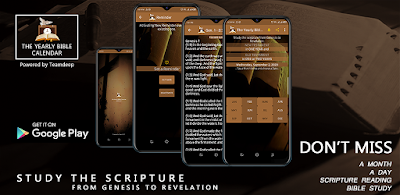Today’s Bible Reading
November 13
Old Testament I
2 Chronicles 3, 4
2 Chronicles 3 and 4 describe the construction of the temple of the Lord in Jerusalem during the reign of King Solomon.
Chapter 3 begins with a detailed description of the temple's layout and measurements. The temple was built on the same site as the previous temple constructed by King David, which had been destroyed by the Babylonians. The foundation of the temple was laid in the fourth year of Solomon's reign, and it took seven years to complete. The temple was designed to reflect the glory and holiness of God, and its construction involved the finest materials and skilled craftsmen.
Chapter 4 describes the furnishings and decorations inside the temple. The most important feature of the temple was the inner sanctuary, also known as the Most Holy Place, which housed the Ark of the Covenant. The inner sanctuary was separated from the outer sanctuary by a veil made of blue, purple, and scarlet yarn and fine linen.
The temple was also adorned with a variety of other precious items, including gold and bronze altars, ten gold lampstands, and a huge bronze basin called the Sea. This basin was used for ritual purification, and it was so large that it could hold up to 12,000 gallons of water.
The construction of the temple was a significant event in the history of Israel, and it symbolized the special relationship between God and His people. The temple was a place where the Israelites could come to worship and seek God's presence, and it was a reminder of the importance of obedience to God's commands.
Old Testament II
Ezekiel 28
Ezekiel 28 contains two separate messages from the Lord, one directed towards the king of Tyre, and another towards the prince of Tyre, who is identified as Satan.
In the first message, the Lord accuses the king of Tyre of being arrogant and prideful, thinking himself to be a god. The Lord reminds him that he is just a mortal man and that his power and wealth have been given to him by God. The Lord then warns that because of his arrogance, the king of Tyre will be brought down and destroyed.
In the second message, the Lord speaks directly to the prince of Tyre, who is described as being full of wisdom and beauty. However, the Lord accuses the prince of Tyre of being corrupt and evil, and ultimately identifies him as Satan. The Lord reveals that Satan was once a great and powerful angel in heaven but was cast down because of his pride and desire to be like God. The Lord warns that Satan's ultimate fate will be destruction and eternal punishment.
Overall, the message of Ezekiel 28 is a warning against pride and arrogance, and a reminder that all power and wealth ultimately come from God. It also highlights the ultimate fate of those who rebel against God and seek to exalt themselves above him.
New Testament
John 10:19 - 42
John 10:19-42 is a continuation of Jesus' discourse about his identity as the Good Shepherd, in which he contrasts himself with the false shepherds who lead God's people astray. In this section, Jesus responds to the Jews who are divided in their opinions about him.
Verse 19 begins with the Jews being divided over Jesus' words, with some accusing him of being demon-possessed while others defending him. Jesus responds by pointing out that he has done many good works in the Father's name, which testify to his identity as the Son of God.
Jesus then reminds the Jews that his sheep hear his voice and follow him, and that no one can snatch them out of his hand. He emphasizes that he and the Father are one, which the Jews interpret as blasphemy and attempt to stone him. Jesus challenges them, asking them which of his good works they are stoning him for, and they reply that it is not for any good work, but for blasphemy.
Jesus then quotes from Psalm 82:6, where God calls human judges "gods," and argues that if God called them gods, how much more can he, who is the Son of God, claim to be one with the Father. He then leaves the area and goes across the Jordan to where John the Baptist had been baptizing, and many people believe in him there.
Overall, this passage emphasizes Jesus' claim to be the Good Shepherd who lays down his life for his sheep and contrasts him with the false shepherds who only care for themselves. It also highlights the division among the Jews regarding Jesus' identity and the importance of listening to his voice and following him.




0 Comments